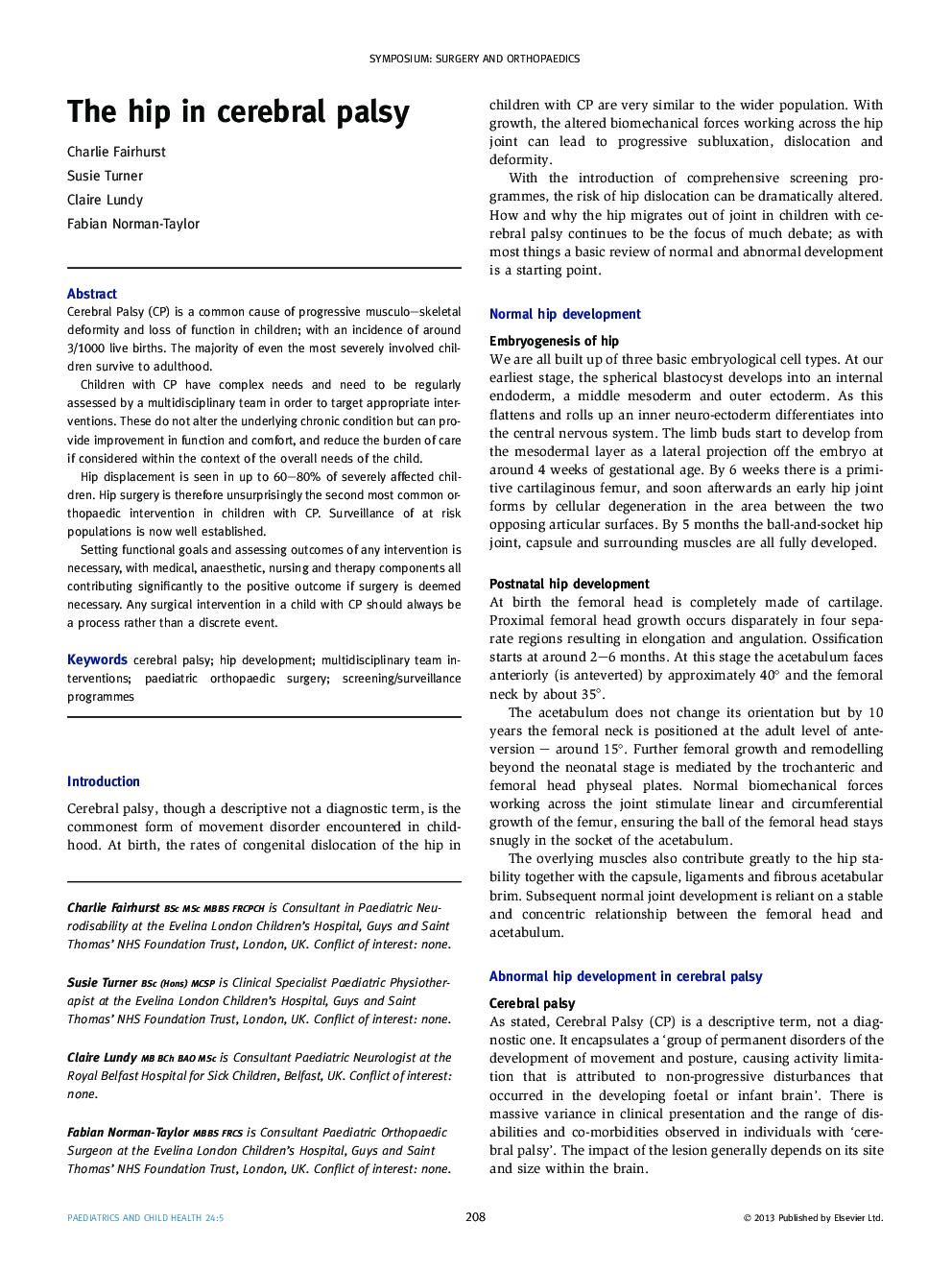| Article ID | Journal | Published Year | Pages | File Type |
|---|---|---|---|---|
| 4172228 | Paediatrics and Child Health | 2014 | 7 Pages |
Cerebral Palsy (CP) is a common cause of progressive musculo–skeletal deformity and loss of function in children; with an incidence of around 3/1000 live births. The majority of even the most severely involved children survive to adulthood.Children with CP have complex needs and need to be regularly assessed by a multidisciplinary team in order to target appropriate interventions. These do not alter the underlying chronic condition but can provide improvement in function and comfort, and reduce the burden of care if considered within the context of the overall needs of the child.Hip displacement is seen in up to 60–80% of severely affected children. Hip surgery is therefore unsurprisingly the second most common orthopaedic intervention in children with CP. Surveillance of at risk populations is now well established.Setting functional goals and assessing outcomes of any intervention is necessary, with medical, anaesthetic, nursing and therapy components all contributing significantly to the positive outcome if surgery is deemed necessary. Any surgical intervention in a child with CP should always be a process rather than a discrete event.
